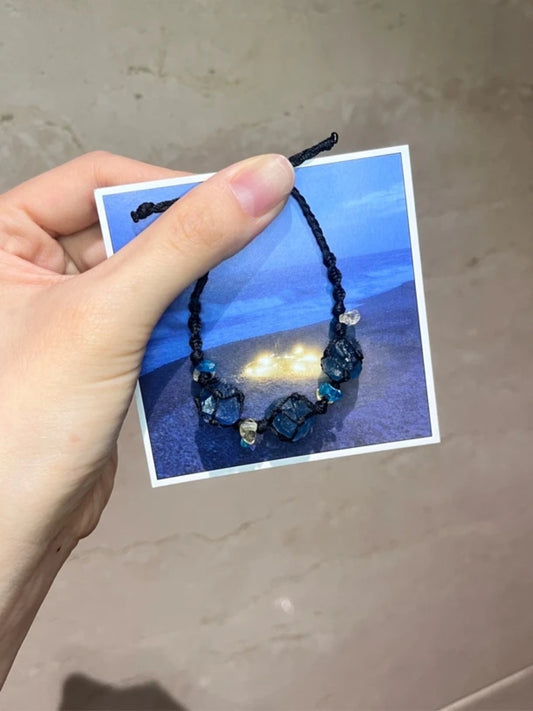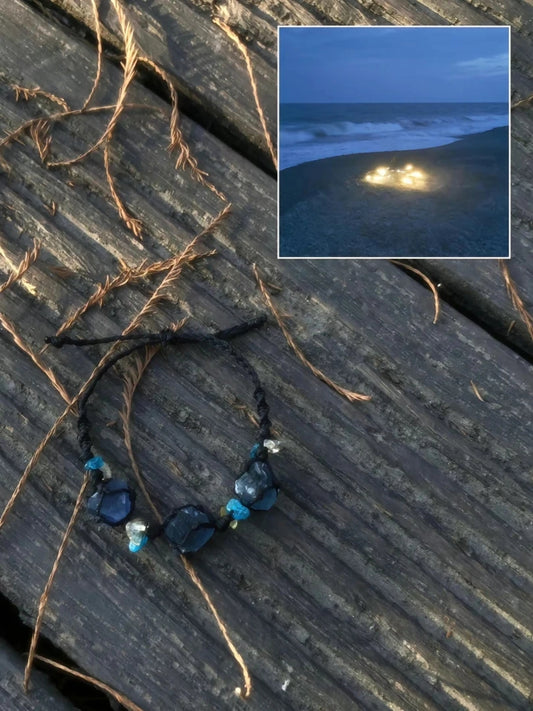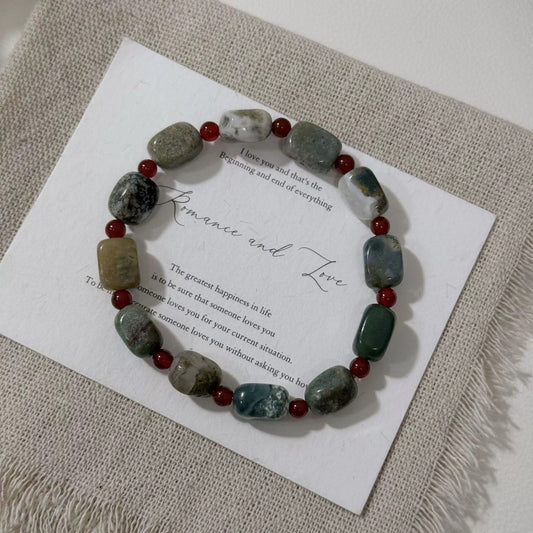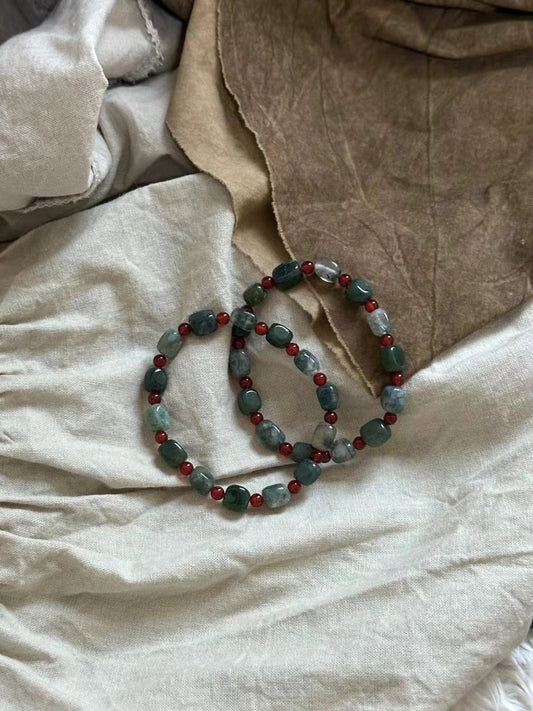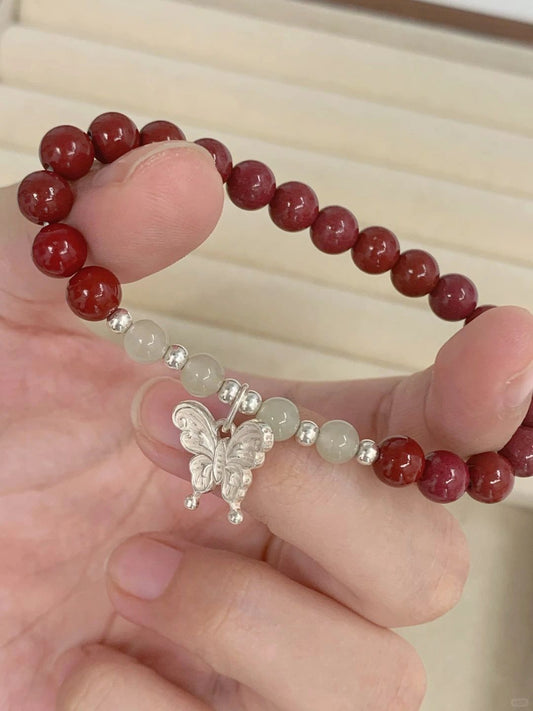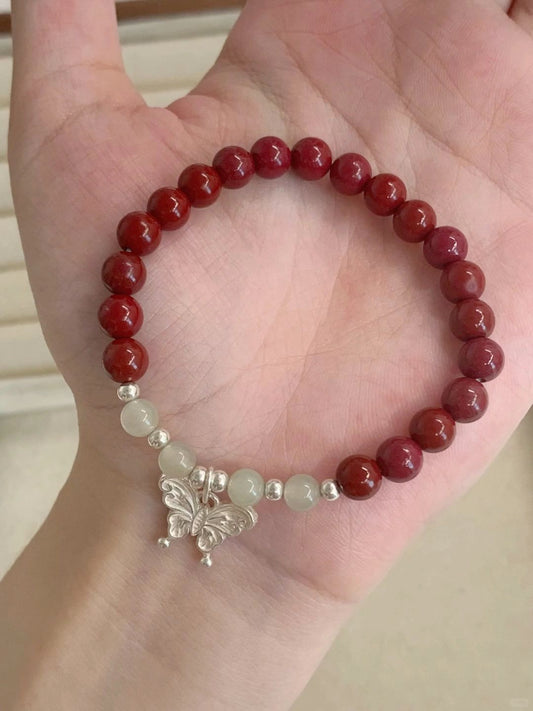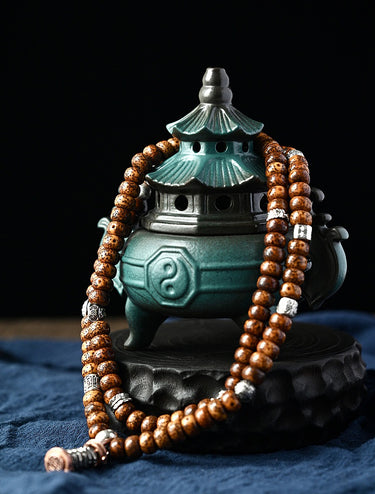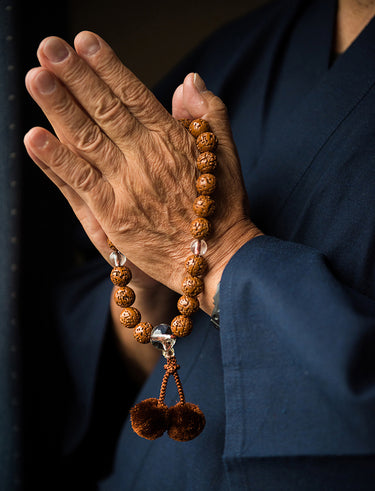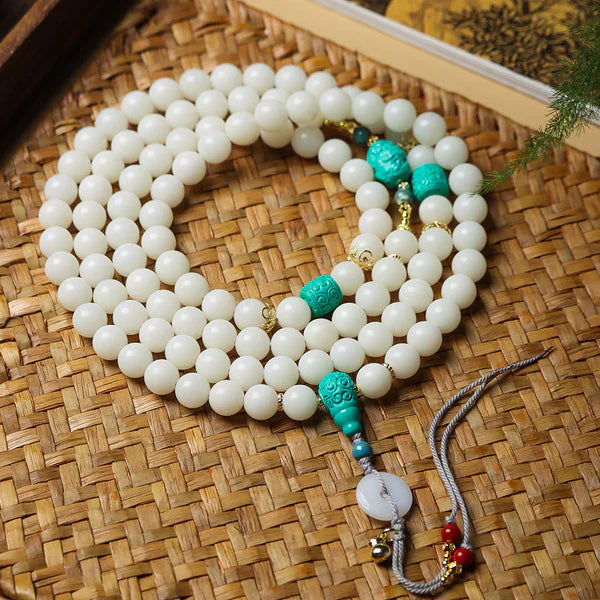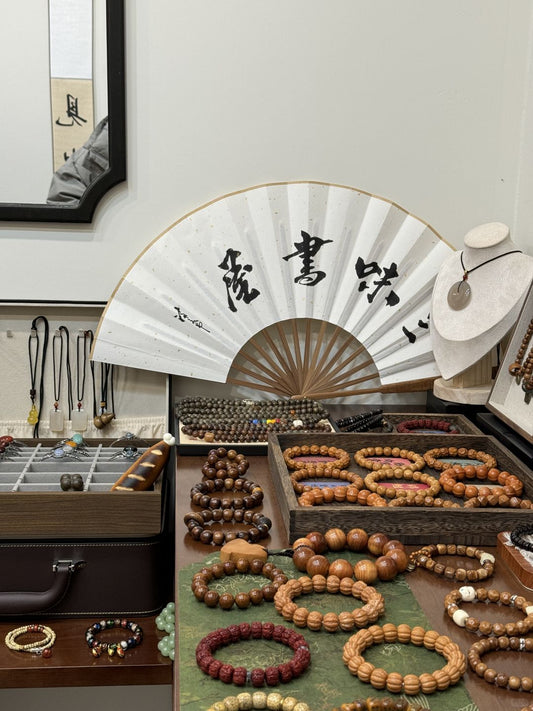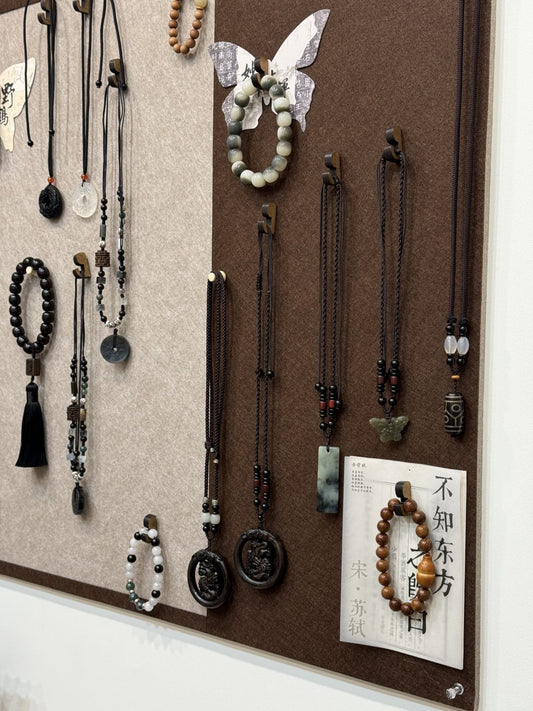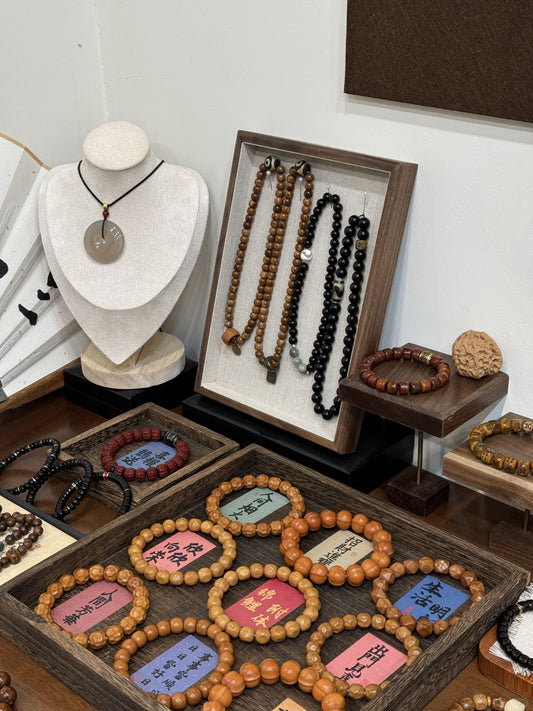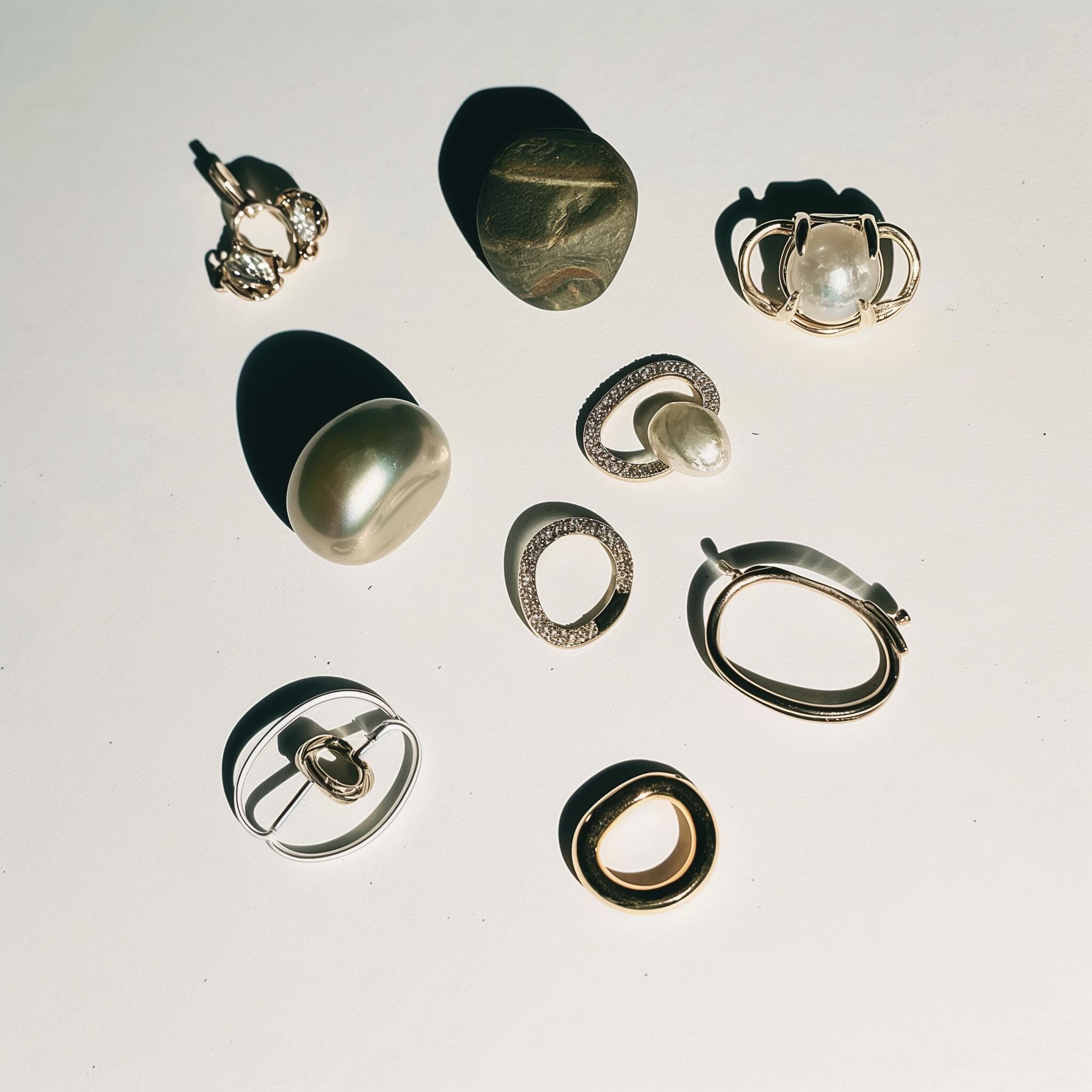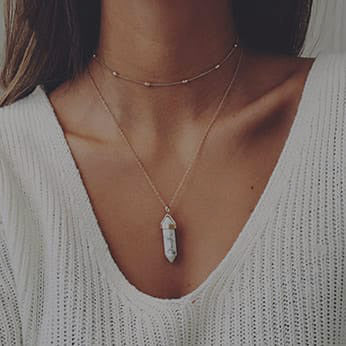7 Spiritual Benefits of Meditating with 108 Mala Beads
In today’s fast-paced world, cultivating inner peace and clarity can feel like a challenge. That’s where Buddhist prayer beads mala, also known as 108 mala beads, come in. Rooted in ancient traditions and used by yogis, monks, and spiritual seekers for centuries, mala beads are more than just meditation tools—they're symbolic, intentional, and powerful aids for emotional and spiritual transformation.
Whether you're new to meditation or deepening an established practice, using 108 mala beads for meditation offers a wide range of benefits. Here are seven powerful reasons to make mala beads a part of your daily mindfulness ritual.

What is Mala Beads?
Mala beads—also known as Buddhist prayer beads or japa mala—are a string of 108 beads traditionally used in meditation, prayer, or mantra chanting. Originating in Hinduism and Buddhism, mala beads help practitioners count repetitions of sacred mantras, prayers, or breaths while maintaining focus and mindfulness.
A mala typically includes:
-
108 main beads: Each bead represents a count in your mantra or affirmation practice.
-
1 guru bead: A larger or uniquely shaped bead that marks the start/end of the cycle, often symbolizing spiritual guidance or the teacher-student relationship.
-
Tassel or charm: Often attached below the guru bead to represent connection and unity.
7 Benefits of Meditating with 108 Mala Beads
1. Enhances Mindfulness and Concentration with Mala Beads
The simple, repetitive motion of moving bead by bead helps keep your awareness anchored in the present. Whether you're reciting a Sanskrit mantra, repeating an affirmation, or practicing breath awareness, mala beads create a rhythmic flow that enhances mental clarity and reduces distractions. This tactile meditation technique is especially helpful for those who struggle with overthinking or restlessness during stillness.
2. Reduces Anxiety and Stress Using Buddhist Prayer Beads
Meditating with Buddhist prayer beads mala can offer a deep sense of calm and grounding. The repetitive action naturally slows your breathing, balances your nervous system, and helps activate the body’s relaxation response. Regular mala use is known to reduce cortisol levels, ease symptoms of anxiety and trauma, and bring about a peaceful state of mind.
3. Deepens Spiritual Practice and Intention Setting with Mala Prayer Beads
Each mala meditation becomes an opportunity to reconnect with your spiritual path. Many practitioners infuse their mala with a specific intention—such as healing, love, strength, or clarity. As you meditate, each of the 108 beads becomes a sacred step toward aligning with that goal. The physical presence of the mala serves as a powerful reminder of your values and higher self.

4. Builds Meditation Consistency and Ritual with Prayer Beads
One of the hardest parts of meditation is simply showing up every day. Mala beads offer a structured and measurable practice: one full round equals 108 repetitions. This tangible system encourages regularity, helps you stay focused, and builds a sense of ritual. Even just a few minutes a day with your mala necklace or wrist mala can help create a long-lasting meditation habit.
5. Supports Chakra Healing and Energy Balancing Through Mala Beads
Many mala beads are made from natural, high-vibration materials like sandalwood, rudraksha seeds, rose quartz, jade, or amethyst. These materials are believed to hold energetic properties that can balance specific chakras and support emotional healing. Choosing the right mala for your intention can further enhance your practice by aligning your energetic field with your spiritual goals.

6. Encourages Grounding and Emotional Presence with 108 Mala Beads
In the chaos of everyday life, it’s easy to become emotionally and spiritually disconnected. The physical act of holding and moving the beads helps you reconnect with your breath, your body, and your emotions. This grounding effect enhances emotional intelligence and allows you to respond to life from a more centered and intentional space.
7. Brings Sacredness to Everyday Life with Mala Beads
You don’t need to be in a temple or on a retreat to feel spiritually connected. Simply wearing or carrying your mala can bring moments of mindfulness into your everyday life. Whether it's around your neck, wrapped on your wrist, or in your pocket, your mala becomes a sacred reminder to pause, reflect, and return to yourself—no matter where you are.
Final Thoughts
Using 108 mala beads for meditation is more than a spiritual tradition—it's a deeply personal and transformative journey. Whether you're looking to reduce stress, deepen your intention, or create a meaningful daily ritual, mala beads are a timeless tool that can guide you toward inner peace and mindful living.
Discover your own piece of this tradition at Buddha3bodhi—where every bracelet tells a sacred story.
FAQs:
1. Why are there 108 beads on a mala?
The number 108 is considered sacred in many spiritual traditions, especially in Hinduism and Buddhism. It is believed to represent the universe's wholeness, connecting the body, mind, and spirit. There are 108 energy lines (nadis) in yogic teachings, and chanting a mantra 108 times is said to create a full spiritual cycle. Learn more in this article.
2. What is the significance of the number 108 in mala beads?
In Buddhism and Hinduism, 108 symbolizes spiritual completion. It's linked to cosmic patterns: 108 is the product of 12 (zodiac signs) and 9 (planets). Many also believe 108 helps cleanse karmic energy or spiritual impurities. This is why mala meditation is often structured around 108 repetitions of a mantra.
3. How do you use mala beads for meditation?
Hold your mala in one hand, starting just after the guru bead (the larger or differently shaped bead). As you breathe deeply or recite a mantra, move to the next bead with your thumb and middle finger. Continue until you’ve completed one full circle of 108 beads. Never count the guru bead—it's a symbolic reminder of your teacher or divine connection.
4. Can beginners use Buddhist prayer beads?
Absolutely. Buddhist prayer beads (mala beads) are suitable for practitioners at any level. They provide structure, rhythm, and intention to your meditation practice, making it easier for beginners to stay focused and build consistency.
5. Can I wear mala beads as jewelry?
Yes, many people wear mala beads as necklaces or wrist malas. Not only are they beautiful and symbolic, but they also serve as a reminder to stay mindful and grounded throughout the day. Just be sure to wear and treat them with respect, especially if you use them for spiritual practice.
6. What materials are best for mala beads?
Mala beads are often made from natural or spiritual materials such as rudraksha seeds, sandalwood, rose quartz, amethyst, turquoise, or jade. Each material carries unique energetic properties—rose quartz for love, amethyst for intuition, rudraksha for protection—allowing you to choose a mala aligned with your intention.
7. What is a guru bead and why is it important?
The guru bead is the larger or distinct bead at the end of a mala. It symbolizes your teacher, the divine, or the higher self. You don’t count it during meditation—instead, you pause at the guru bead as a moment of reflection or gratitude, and then reverse direction if continuing your practice.
8. Can mala beads be used for affirmations or non-religious meditation?
Yes! Mala beads aren’t limited to religious practice. You can use them to repeat affirmations, set intentions, or simply focus on your breath. Whether you’re spiritual or secular, mala beads are powerful tools for personal growth, healing, and inner peace.









































































































